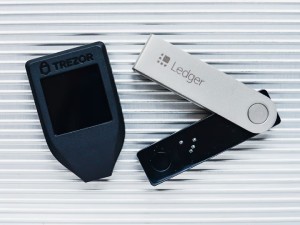Key Features of Hardware Wallets
Hardware wallets may be considered a physical device that stores cryptocurrency private keys offline. Software wallets heartily store private keys on an internet-connected device, such as a phone or computer, posing a threat of being hacked. Hardware wallets, therefore, must ensure that your keys are kept offline away from such internet threats.

The physical gadgets usually come very small, USB like, with a display showing transaction information and a button for confirming an operation. These allow you to securely sign transactions without ever exposing private keys onto any connected network, thus protecting your keys within the device from hacking or malware and other cyber threats.
- Offline Storage: The main trait of these devices is that they do store private keys offline, minimizing the chances of being hacked.
- Sign Secure Transactions: Transactions are signed on the hardware wallet itself, so your private keys never have to leave the device, even when you transfer funds.
- Backup and Recovery: Hardware wallets allow you to securely back up the wallet's recovery phrase so that you can restore the wallet if it happens to get lost, stolen, or damaged.
- Multi-Currency Support: Most modern hardware wallets support a wide variety of cryptocurrencies so you can keep Bitcoin, Ether, and many altcoins under one roof.
How Does a Hardware Wallet Work?
The functioning of hardware wallets is to generate and store private keys within the device itself. Generally, this is how they work:
Generating Keys
When a hardware wallet gets set up for the first time, it generates a new private-public key pair. These keys are kept secured in the device. The private key receives transactions signed into it, and the public key is used to receive cryptocurrencies.
Transaction Signing
When you want to make a transaction, you connect the hardware wallet to your computer or a mobile device. The wallet will then generate a transaction request displayed on the device's screen. After verifying that the details are correct, you provide your consent for the transaction by physically pressing a button on the device-the private key is thus kept offline and away from any threat that could materialize online.
Immunity from Malware
Since the private key never leaves the device, even in case of a malware attack on your computer or phone, the assets remain safe. The transaction gets signed on the hardware wallet itself and not through some software on your computer or phone. This, in most cases, makes such an attack an impossibility.
Recovery
In case you lose your hardware wallet or it gets damaged, you can recover your funds via the recovery phrase you had received when setting your device up (consisting of 12-24 words). This backup is your assurance that you will never lose your cryptocurrency even if something unfortunate happens to your wallet.
How Does a Hardware Wallet Differ from Software Wallets?
While holding private keys is one way hardware and software wallets share a common feature in the working of these two types of wallets, what is done with them is quite different. Here is a comparison:
Security
- Hardware Wallet: Hardware wallets keep the private keys offline and hence are protected from online-based threats. If your computer or smartphone gets compromised, the keys are still safe.
- Software Wallet: Software wallets store your keys on your device (phone, PC, etc.) so malware, phishing attacks, and other online threats can compromise them.
Convenience
- Hardware Wallet: Although highly secure, the use of hardware wallets requires physically connecting the device to your computer or smartphone every time you want to sign off on a transaction-this can be a little cumbersome compared to simply using a software wallet.
- Software Wallet: Software wallets are typically more convenient, as they can be used directly from your phone or computer. There is a quick transfer and receipt of funds without requiring a hardware connection.
Cost
- Hardware Wallet: Hardware wallets cost money, generally ranging from $50 to $200, depending on the brand and features.
- Software Wallet: Most software wallets are free to use even though they may charge network fees. So they are more cost-effective if you do not want to invest in a physical device.
Examples of Popular Hardware Wallets

There exist certain brands that dominate the hardware wallet market by providing different user features. Among those are:
- Ledger Nano X: One of the most renowned hardware wallets, it supports an enormous number of cryptocurrencies and boasts of Bluetooth support for mobile devices.
- Trezor Model T: The other popular choice, Trezor's Model T supports a great number of cryptos and, importantly, comes with a touch screen for ease of use.
- KeepKey: KeepKey possesses a screen larger than most hardware wallets, conducive to viewing transaction details.
- CoolWallet S: The CoolWallet S is famous for its stylish credit-card-size design and also offers Bluetooth compatibility for mobile use.
Keep Your Crypto Safe
In terms of security for cryptocurrencies, hardware wallets take first place, especially for people who consider long-term storage and want to avoid online threats. On the other hand, software wallets are convenient but far less secure. So, if you really want to keep your digital assets safe, then putting your money into a hardware wallet is worth considering. You can also create a crypto wallet to get started securely.
In case you missed
There are two main types of wallet:
— Defi Krab 🦀 (@Defi_Krab) August 16, 2025
1. Hot Wallet: These are online wallets. We can download them on our devices (Less secure).
Eg: Metamask, Solflare, Nightly...
2. Cold Wallet: These are offline wallets. It is a physical type of wallet (more secure).
Eg: Ledger, Keystone... pic.twitter.com/RiChEJRNq1